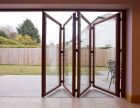A Modeling Process To Use For Designing Product
We know that Rapid prototyping is the automatic construction of physical objects using additive manufacturing technology. The first techniques for rapid prototyping became available in the late 1980’s and were used to produce models and prototype parts.
Today, they are used for a much wider range of applications and are even used to manufacture production-quality parts in relatively small numbers. Some sculptors use the technology to produce complex shapes for fine arts exhibitions.
Rapid prototyping is a technique used to build up a substantial structure of a product using Computer-aided design software. It can create a solid structured replica of a product rather than a two-dimensional outline. These prototypes have different uses. They are used for illustration demonstration of the product for marketing and communication purpose. They are also used for analytic and test purpose and for fast development and tooling.
Rapid Prototyping has some basic procedure to utilize. First is to make a computer-aided design replica of the product. Next is to change the CAD model design to stereo lithography design. Then, the stereo lithography design will be then sliced to make a cross-sectional replica. The constructed coating will be then put on the top of another. Finally, the end model will then be spotless. There are at least six techniques for rapid prototyping. And there a variety of prototyping apparatus engaged for these techniques.
Some of which are, Stereo lithography, plastic-coated Object Manufacturing, discriminating Laser Sintering, complex Deposition Modeling, Solid Ground Curing and 3d Printing.
3d printing uses 3d Printers; a 3d printer is a printer that can print stuff as an actual 3d entity. Chiefly, if you have a copy on your PC you can then make that model a touchable thing using a 3d printer. A 3d printer works by printing a layer of a 2d thing upon other layer of the same 2d thing ensuing in a 3 dimensional thing.

